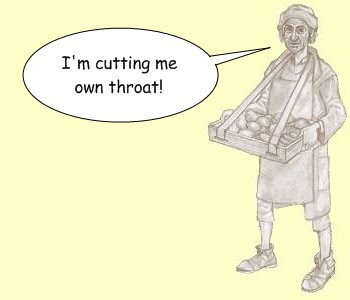2009 has been a pretty good year for fighting games, particularly 2D ones. It has seen Capcom release the
critically acclaimed Street Fighter IV, the first new Street Fighter game in 9 years, it has seen Arc Systems release BlazBlue, the spiritual successor to the Guilty Gear series (which Arc somehow lost the rights to), which was also
highy rated, even if it probably couldn't hope for the same level of commercial success. It has even seen a new King of Fighters game, which wasn't as
well received, but at least they did redraw all the art in the game for the first time, well, probably ever.
However, the fighting game which I had been looking forward to most has been Tekken 6. In fact, considering it was released in the arcades in 2007 and a home port was always going to be released, it may have been the game which I have
waited for the longest out of any I can remember. I have always had a particular fondness for the Tekken series. Tekken Tag Tournament was the primary reason I bought a PS2 back in 2001, so it is essentially what made me a console gamer.

My copy arrived on release day, and while I haven't had that much time to play it, just a shortish stint of versus play was enough to confirm that the Tekken series is still very much on form.
Tekken's big strength is the cast of characters. Each game has added new characters, without removing or diluting old ones, and Tekken 6 now has 40 playable characters, with the only real incidence of direct move sharing being that Eddy and Christie still appear to be carbon copies of each other. While the cast does have some serious weak points (Roger Jr, Panda, Mokujin), there are also an enormous number of really good ones. Character design is a personal thing, but I think Tekken has a stronger roster than Soul Calibur, and is far superior in this regard to the relatively staid characters of Virtua Fighter or the oddball cast of Street Fighter (there is a reason why the vast majority of casual SF players play Ryu or Ken).

In addition, they've continued to improve the transitional animations and update old move animations. I can still spot some vestiges of Tekken 2-era animation, but for the most part animations are newer, smoother and more impressive than before. It works really well with the motion blur effect they've introduced in T6, which smoothes out slow moves, and emphasises the fast, powerful strikes which characterise the series. They've added a fairly substantial number of new moves to each character (remember that this game is essentially 3 updates from Tekken 5, there was the Dark Resurrection update to Tekken 5, the base Tekken 6, and then the home version is effectively a port of Bloodline Rebellion, the update to Tekken 6) without removing old ones like they did in Soul Calibur 3 and 4, in which certain characters were quite badly denuded.
I tried to play a bit of the Scenario Campaign mode (the Tekken Force-style beat-em-up they've included with the console port) last night and to my surprise, I ended up watching what seemed like nearly half an hour of intro and cutscene before I even got to start playing (although I did think the prologue, which recaps the Mishima storyline from Tekken 1 through to the start of Tekken 6, was quite good). I think they've missed the point here. A Tekken Force mode should be something you can jump into, preferably with a friend, and annihilate scores of identikit enemies for a bit before going back to the core fighting mode. I don't think we need hours of cutscenes showing characters interact and elaborate on the plot. A rendered movie on starting and finishing the story mode is all (some would even say more than) a fighting game needs in terms of exposition. If this mode is the reason for Namco's painfully slow conversion of the arcade game, then they've wasted quite a lot of their time, especially seeing as the mode still seems ugly and awkward compared to a genuine third person action game.

However, to a fighting game fan it doesn't really make that much of a difference as long as the core fighting is so strong, and because of this I think, for me at least, Tekken 6 appears to be the best of the current generation of fighters. I've read some criticisms that it doesn't do enough to move the game forward, but I actually appreciate that, in an attempt to reinvent themselves Namco haven't taken a step backwards (as happened to an extent with Soul Calibur 4). Essentially, Tekken 6 may be more of the same, but it is more of the things that made Tekken good in the first place.





